How to Write a Resume for a Retired Person

It is normal to have felt that you won’t ever have to write a resume again after your retirement. However, plans change and you may now need an additional source of income or something to fill a void.
As a retiree, you have lots of skills and experience to offer your potential employers. You can highlight all you have to offer in a retiree resume. It can also help you land a role that suits your present situation.
In this guide, we will be providing you with well-detailed information on how to write a resume for a retired person. If you do not have time to do all this, you can check our top of the best resume writers .

What Is a Retiree Resume?
A resume for retired person is a type of resume that is written by someone who is currently retired but looking to return to employment. It has to be structured in a way that shows your potential employer why you are the most qualified candidate.
Hence, it should highlight the skills and experience that you have garnered from your previous employment. Learning how to write it is as easy as learning how to send unsolicited resume .
Best Resume Format for a Retired Person
When writing a resume for retirees, you may either use the chronological or functional format. You should have a good idea of how a traditional chronological resume is written. In this format, you will have to list all the positions that you have held, starting with the latest, and in the reverse order.
Alternatively, you may opt for the functional format. This format involves you listing the work that qualifies you the most for a role at the upper part of your CV. The time that you held the position shouldn’t be considered. It is the best method of making career changes less evident and removing gaps from one’s employment history.
Which is the ideal format for a returning to work after retirement resume? A chronological resume is more suitable for someone who is trying to get to a field he or she has just retired from. Meanwhile, a functional resume is an ideal choice for people that retired a while ago or took a break in between their careers.
Tips for Writing a Resume for a Retired Person
A conventional resume is an excellent template for resumes for retirees. But if you want to, you can develop a completely new job summary. The information below will show you how to write a resume for a retired person perfectly:
1. Add Only Relevant Information
Try not to include information that isn’t related to the role that you are applying for. Old positions and expired certifications should be excluded. Check out job listings for your past roles and ensure that your language is in line with that of others in the industry.
That way, you can create a trendy job history. Also, you should only reference dates or years of experience that pertain to the job description. For instance, you may write that you have a decade worth of experience in sales.
2. Include Skills That Employers Need
You should look at your preferred job listings and search for the in-demand skills that you have. Soft skills such as communication and teamwork in particular are vital. You should also include skills that show that you are prepared to learn new things. Your resume should reflect how knowledgeable and experienced you are.
Additionally, you should pay attention to the summary close to the upper part of your resume. Describing your relevant experience and skills in this section can be very beneficial. Mention the technology that you can work with, it will be even better if it’s new or listed in your preferred job description.
You should also add any training or workshop from the last couple of years. Your resume should be revamped if strong verbs haven’t been used to describe your professional accomplishments.
3. Describe How You Used Your Time for Development
If it has been over a year since you retired, you should describe how you utilized your time for growth. You should also add any volunteer work or new skills you acquired, they don’t have to be related to the role that you are trying to get. For instance, you may mention how you participated in continuing education classes. Your potential employer will be more interested in hiring you if you show that you used your free time productively.
Returning to Work After Retirement Resume Example
Let’s take a look at an example of a functional resume for retired person returning to work. This should give you a good idea of how to write yours:
A dedicated office manager who has always surpassed performance goals. Helps teams to meet their target and give customers the best experience.
- Training: Added four new employees to the team and trained them on the essential facets of office management. The training covered billing, booking appointments, and customer service.
- Team Management : Was in charge of a team of eight and entered all information on the system. Ensure all was in order including budget, payroll, and schedule. Also ensured that performance goals were met.
- Data Security : Taught team members about data security to ensure office compliance. Achieved this via meetings and seminars on HIPAA laws and secure computer practices.
* Office Manager, Safe Hands : Long Island, NY*
* Office Lead, The Wright Company : Buffalo, NY*
* Front Office Assistant, Standard Dental : Rochester, NY”
BSc in Business Management, Fordham University, NY, New York.
Certifications
Certified Office Manager
Sections to Include in a Retired Person’s Resume
There are certain sections that you have to include in your retirement job history just like when writing a family business resume or listing patents on resume . You should start with a header that contains your contact information. This should include your main email address and maybe a phone number.
Next in line should be the skills section. Here, you should list out the skills you gained during your time of employment and how you used them. Follow this section with an experience section in which you describe your work history. You should also consider adding a resume objective for retired person.
Remember that this could either be in a chronological or functional format, depending on what suits your situation best.
Next, add an education section to provide your potential employer with a view of your academic background. You may include an additional section for any certification that you have received in a retired resume.
Key Takeaways
A well-written resume for a retired person will go a long way in getting you back in employment. We have done our best to provide all the information you need to get it done in this guide. Remember to opt for a format that describes your qualifications the best.
You should also add only relevant information and modern skills. If you feel a need to, you may pad your resume too.
1. Why do retirees need a resume?
A retired person may decide to get a new job to increase his or her income, find something interesting, or share experience.
2. What should retiree resume include?
A resume for retired person looking for part-time job or full-time job should consist of the same information as a regular resume. However, more focus should be placed on the skills and qualifications you garnered during your employment.
3. What is a retiree resume?
A retirement resume is a form of resume for a person who is currently retired but wants to start working again.
4. What should I include in a retiree’s resume summary statement?
Your summary statement should tell your employer about your relevant experience and skills. This may include tools you can use or recent training or workshops.
5. How do I format a retired person’s resume summary statement?
First, you should avoid using first-person and third-person pronouns in your resume for retiree returning to work. You should also use sentence fragments only. Finally, use action verbs instead of passive verbs.

Education Writer
One of our team members is Alina Burakova. She has vast experience in reviewing career and education-related websites. Being a little shy, Alina dislikes writing about herself too much, so here is her short bio. In 2010, she graduated from ...
Relevant articles
Have you seen the dream job advertised and want to apply? Well, you have got to ensure that you have an excellent resume. This will let your potential employers know your strengths and experience to see that you are the right fit. But not everyone knows what makes a good CV bio. For example, employers…
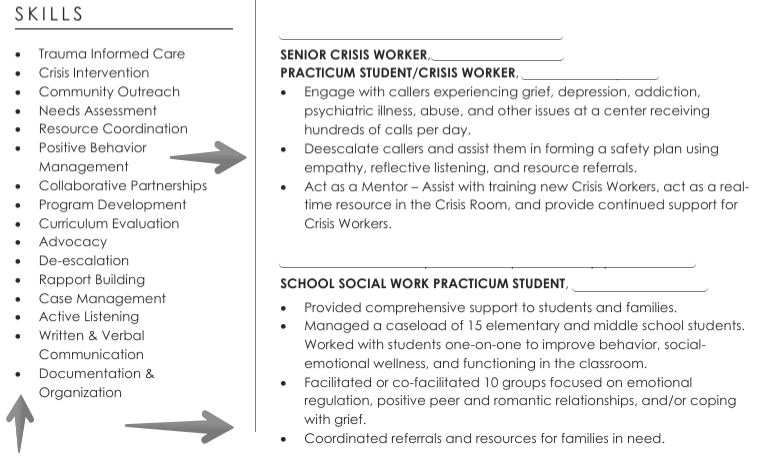
The process of writing an effective resume isn’t one that can be rushed. Having good formatting and layout as well as carefully targeting each job application is crucial. However, one simple feature can make a huge difference for everyone – excellent resume bullet points. “If opportunity doesn’t knock build a door” – Milton Berle A…
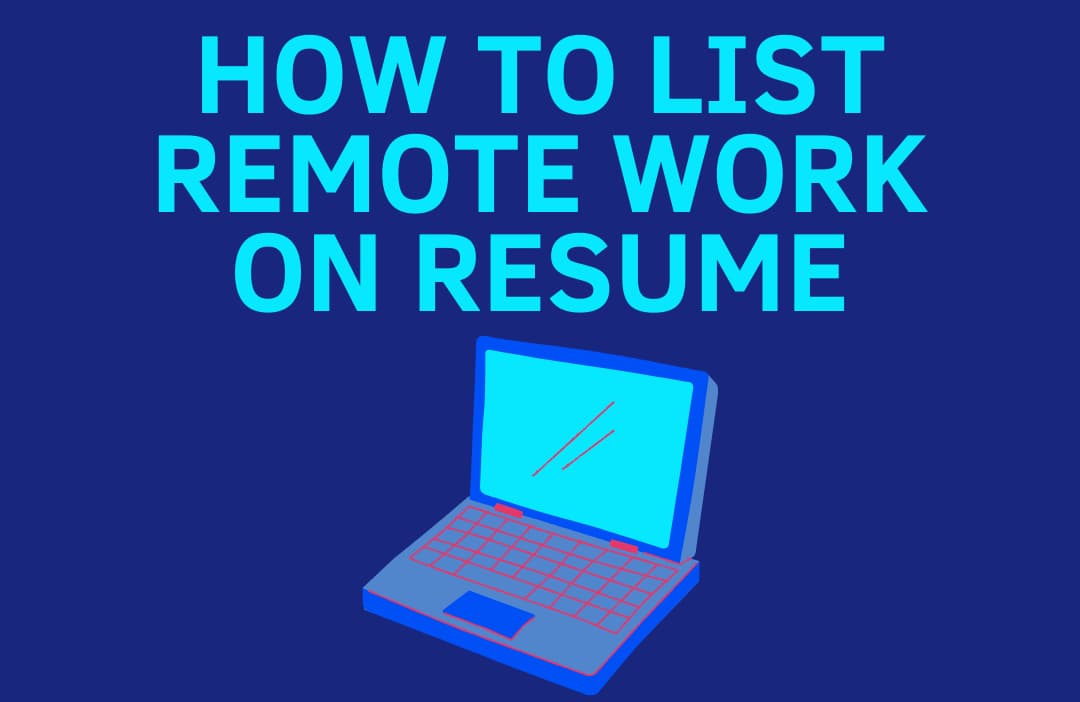
Before the outbreak of COVID-19, remote jobs had experienced a 44% rise in five years. Today, most companies in the US prefer having their employees work from home. So, are you ready to learn how to list work from home on your resume? Whether you’ve held a telecommuting role in the past or you’re switching…
Your email address will not be published. Required fields are marked *
Resume Writing CompTIA Certification on Resume: How to Put It [+Examples]
Resume Writing Can You Put Udemy On Resume?
Admission Consulting The Five Best Graduate School Admissions Consultants Reviewed

Build my resume
- Resume builder
- Build a better resume in minutes
- Resume examples
- 2,000+ examples that work in 2024
- Resume templates
- 184 free templates for all levels
- Cover letters
- Cover letter generator
- It's like magic, we promise
- Cover letter examples
- Free downloads in Word & Docs
5 Returning to Workforce Resume Examples for 2024
- Returning to Workforce
- Returning to Workforce 2
- Returning to Workforce 3
- Returning to Workforce 4
- Returning to Workforce 5
- Returning to Workforce Resume Writing 101
Whether you took a sabbatical or spent some time caring for a loved one, returning to the workforce usually means a resume update and a whirl with a free cover letter builder . Your skills and experiences might have changed since the last time you were employed, and you might want to change your resume formatting to emphasize your skills over the gap in your work experience.
Whatever the reason behind your return, we’ll help you put your best foot forward. Get ready to roll with our five returning to workforce resume examples.
Returning to Workforce Resume
Microsoft Word
Google Docs

Returning to Workforce 2 Resume

Returning to Workforce 3 Resume

Returning to Workforce 4 Resume

Returning to Workforce 5 Resume

Related resume examples
- Stay At Home Mom Returning to Work
- Front Desk Receptionist
- Personal Assistant
- Stay At Home Mom
What Matters Most: Skills & Work Experience

While the role you’re applying for matters, hiring recruiters looking at a returning to workforce resume will want to know whether you applied yourself during your time away.
You don’t have to disclose every sordid detail—all you need is to demonstrate that your skills are relevant to the job , whether new or existing.
Here are some of the best returning to workforce skills recruiters are looking for.
9 best returning to workforce skills
- Customer service
- Project management
- Organization
- Time management
- Problem-solving
- Microsoft Office
- Communication skills
- Active listening
Sample returning to workforce job experience bullet points
Filling in the blanks with any volunteer, freelance, unpaid, or part-time work you might have done will help dispel any assumptions made about your resume gap.
Although you shouldn’t feel like you have to go into specifics about your career break (especially if it’s sensitive or personal), adding quantifiable metrics whenever possible can help potential employers get a better idea of what you did with your time.
Here are a few samples:
- Advised and assisted the family of 5 in planning healthy meals, purchasing, and preparing foods
- Created, assigned, and scheduled various housekeeping duties for 3 children ages 4 to 12, according to their capabilities
- Kept track of the grocery inventory, making sure items moved on a FIFO basis, saving the household $4,000+ a year in grocery shopping expenses
- Provided 24/7 in-home care for my mother during treatment for a medical condition until she made a full recovery within two years
- Traveled to 8 cities in Asia, Australia, South America, and North America to gain personal and professional perspective
Top 5 Tips for Your Returning to Workforce Resume
- If you’re returning to the workforce, chances are that the career experience you had might not be as relevant to the current job market, even if you have more than 10 years of experience. Unless you have been actively keeping up with your skills while you were away, it’s better to keep only the important details in your resume .
- Start with your career break, then record your most recent jobs. This filters out any employers who might prefer complete career histories and addresses your resume gap early on, allowing the reader to focus on the rest of your work experience and what you can contribute to the new role.
- You might have moved or had a change in relationship status, leading to a different last name. List your most recent contact details at the top of your resume, and consider adding any career-related social media you might have.
- Depending on the position you’re applying to, you could benefit from a skills section that details how you applied your skills in a quantifiable and measurable way. You can also highlight your skills section by moving them so that the recruiter reads it before your work experience.
- Listing your work experience in months and years can make the gap in your career stand out. Changing to using years only will help recruiters focus on the time you spent employed, shifting their perspective toward your career instead of the lack thereof.
Yes, especially if you’re having trouble filling out the blank space in your resume. You can also link your education with any studying or application you did during your time off. The key here is to demonstrate how your skills and experience are relevant to the present job climate.
Any job will do as long as you’re qualified for it and it appeals to you! Some people choose to change career paths when they return, while others get right back to the industry they previously worked in. While you’re job hunting, consider getting an entry-level job in the meantime to fill out your resume.
While we don’t usually recommend including a career summary if you have a lot of relevant information to include in your resume, adding one can help break the ice and mention your resume gap within the context of your career. If you choose to write one, make sure it’s tailored to the job you’re applying for.

- Skip to primary navigation
- Skip to main content
- Skip to footer
Attention: 4 Corner Resources is being used in a phishing scam. Read more about how to protect yourself.
4 Corner Resources
How to Create a Return to Work Resume (With Sample)
February 16, 2024 | Career Advice
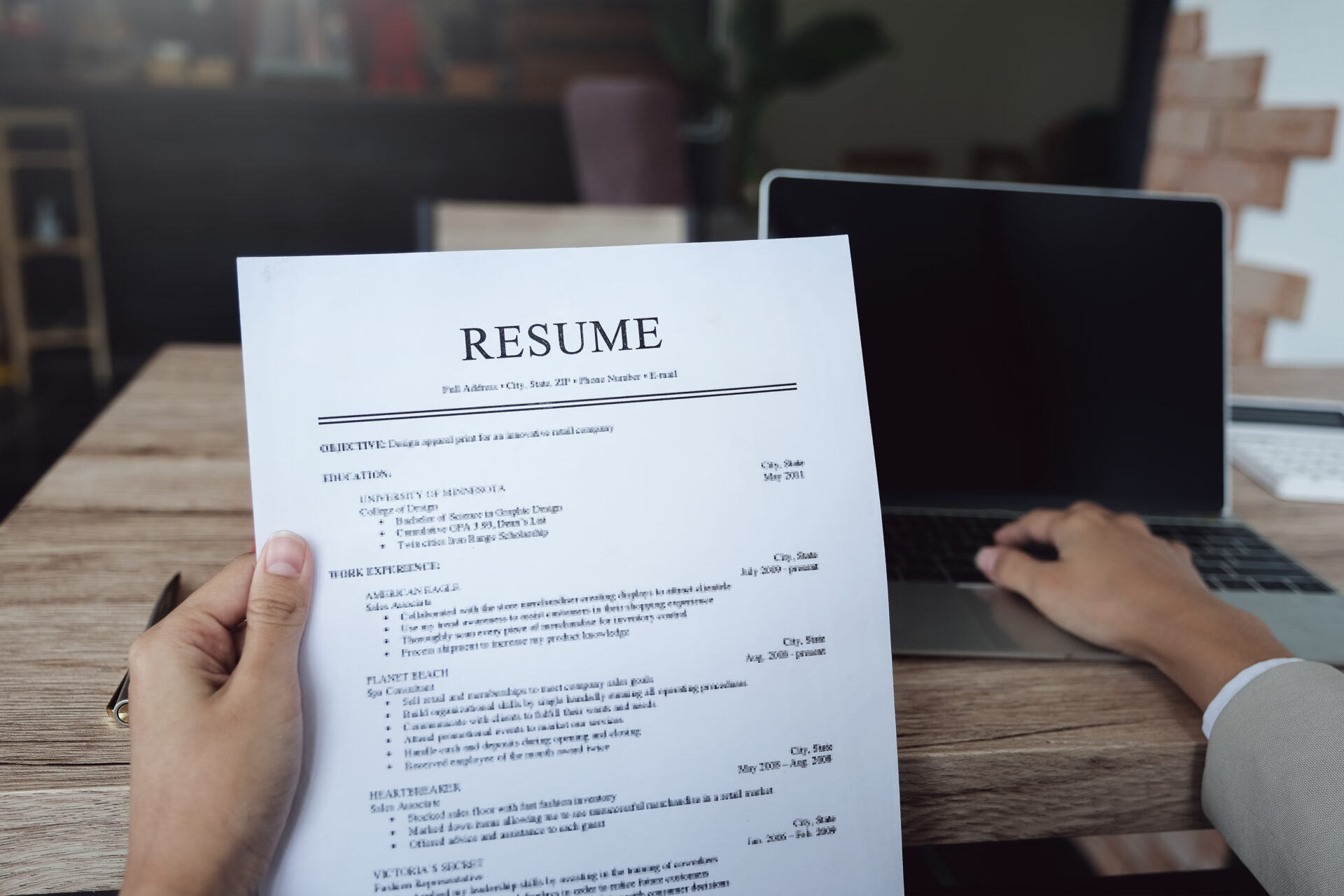
If you’re returning to the workforce after time off, updating your resume should be your first priority. Your resume will help you get your foot in the door, showcase your skills, and convince hiring managers to pick up the phone and call you for an interview.
Follow these tips to create a resume for returning to work, and use the sample resume below for inspiration as you position yourself as a standout candidate.
What to Focus on in a Return to Work Resume
Prioritizing your strengths.
Your job-specific strengths should be showcased more prominently than your work experience if you’ve been out of the workforce for a long time. It’s vital to instantly convey to hiring managers how you’re qualified for the job they’re hiring for, which can be done by moving the skills section of your resume to the top or using a format that places less of an emphasis on previous jobs (more on this below).
Modernizing your old resume
Your resume from before you left the workforce probably has a lot of good material, and your prior experience is still relevant. There’s no need to trash it and build a new resume from scratch completely. Use your old resume as a starting point, then modernize it.
The professional world has changed significantly in the last several years. Resume design norms have evolved, as has the way companies hire. Your resume should be current for the year you’re applying and adjusted to the post-pandemic world.
Why Do You Need a Resume for a Return to Work?
It’s the first thing hiring managers see.
Your professionalism and charm might help you land the job… but first, you need to get the chance to exercise them by landing an interview. Your resume is one of the first things hiring managers see when you throw your hat in the ring for an open position, so getting it right is crucial to making a good first impression and breaking back into the workforce.
Highlight your transferable skills
Since you don’t have a current job for hiring managers to go on as a reference point, you need to help them see how your skills are relevant. What makes you qualified to do the job? Your resume connects your background from your prior career and the skills you developed during your time away from the workforce to the position you want now.
When Should You Use a Return to Work Resume?
Use this resume to:
- Return to work after taking time off
- Change careers after a gap in employment
- Build professional connections that will help you land a job
Common Return to Work Resume Challenges and How to Overcome Them
Accounting for a long gap in employment.
You have two options for handling a long employment gap on a resume. Your first option is to cite it directly by listing what you were doing during that time as an entry under experience, i.e., ‘stay-at-home mom.’ This makes certain hiring managers know the reason for the gap and may keep them from making negative assumptions. Your second option is to downplay your employment gap by making other sections of your resume more prominent or using an alternative format where employment is a secondary focus, like a functional resume.
Demonstrating impressive accomplishments
It’s much easier to show how you can make an impact on an organization if you have a recent track record of closing big deals or exceeding performance goals. Since you don’t have recent work accomplishments to show, however, you’ll need to sell yourself as a candidate in other ways. Use your resume to highlight achievements and qualifications you’ve gained in other non-work experiences, such as participating in volunteer work or completing a specialized training program.
Return to Work Resume Format and Key Components
A chronological, functional, or combination resume format is a good choice for returning to work.
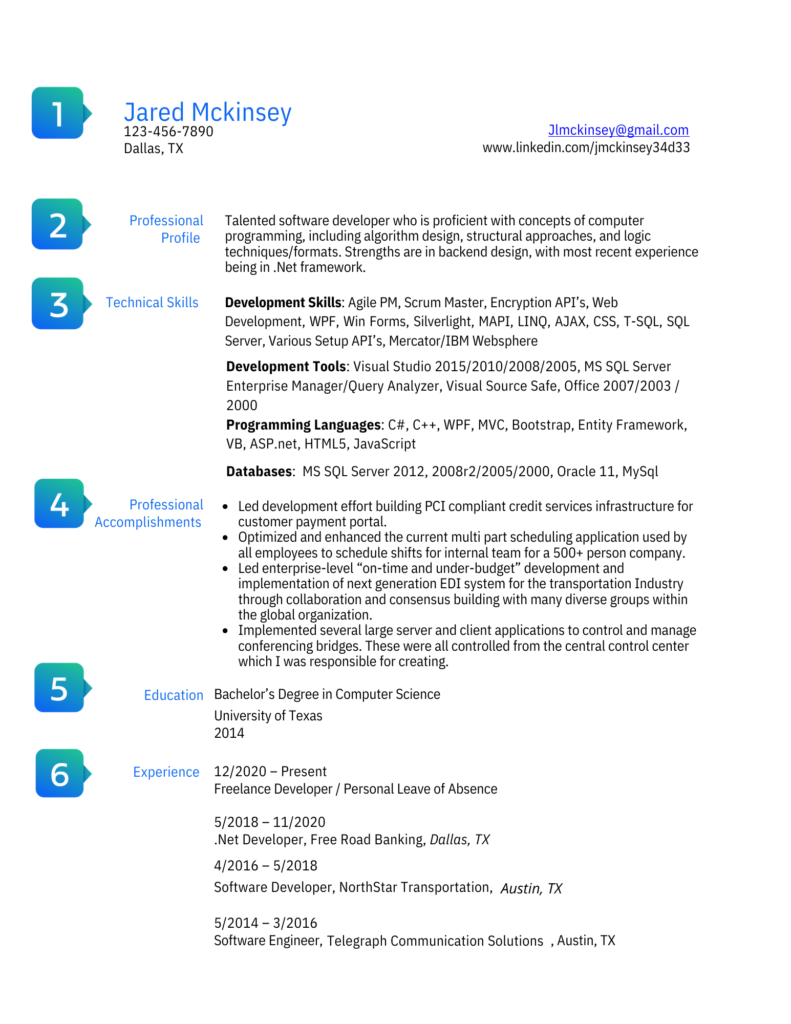
Your resume should include these components:
- Contact information Begin with your name, address, phone number, and email address.
- Summary A summary section is useful for job seekers who are returning to work, acting as your “elevator pitch” for why you’re a great candidate. Use it to sum up one to two of your strongest skills and highlight what you’d bring to the specific position and company.
- Skills Zero in on a handful of your top hard and soft skills and list them in a prominent section. As often as possible, use skills that are mentioned as requirements in the job description. This will help your resume get noticed by hiring managers and automated applicant tracking systems used to screen candidates.
- Accomplishments Share your most noteworthy work achievements that are both measurable and related to the job you are applying for. It is important to show the hiring manager that you are results-driven and have a history of exceeding expectations.
- Education List your degree and the school(s) you attended.
- Experience List your work experience in reverse chronological order. If you’re using a functional resume format, group your experience or accomplishments by type–i.e., technical experience, leadership experience, etc. Under each item, give specific, detail-rich examples of your accomplishments in that position or area, citing numbers and quantifiable achievements as much as possible.
Polishing your resume is the first step toward restarting your career a break . Make sure you’re using a modern format, customizing the document for the specific job you’re seeking, and avoiding some of the most common resume mistakes .
Just because you haven’t worked in a traditional full-time job doesn’t mean you don’t have relevant experience. In addition to listing the jobs you held before leaving the workforce, state qualifications you’ve gained during other activities that have filled your time, like serving as a caregiver or managing your household finances.
A cover letter offers a little more leeway in terms of structure and content than a resume, which makes it an ideal place to explain an employment gap and position it in a positive light.
When you’re returning to work after a long break since your last job, consider using a functional resume format. This alternative format helps call the hiring manager’s attention to your relevant skills, particularly position-specific skills like technical expertise and management experience.
When you’re reentering the job market, you can absolutely include unpaid positions in the experience section of your resume. Show how these roles expanded your skill set, brought you valuable perspective or allowed you to contribute to a worthwhile cause.
Enjoying our articles? Get the latest straight to your inbox.
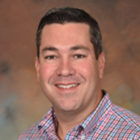
About Pete Newsome
Pete Newsome is the President of 4 Corner Resources, the staffing and recruiting firm he founded in 2005. 4 Corner is a member of the American Staffing Association and TechServe Alliance, and the top-rated staffing company in Central Florida. Recent awards and recognition include being named to Forbes’ Best Recruiting Firms in America, The Seminole 100, and The Golden 100. Pete also founded ze ngig , to offer comprehensive career advice, tools, and resources for students and professionals. He hosts two podcasts, Hire Calling and Finding Career Zen, and is blazing new trails in recruitment marketing with the latest artificial intelligence (AI) technology. C onnect with Pete on LinkedIn
Related Posts

Tips For Remote Employees Starting a New Job

Tips for Building a Powerful Executive Resume (With Example)

How to Write a Cover Letter That Gets Results
- EXPLORE Random Article
How to Resume Working after Retirement
Last Updated: February 26, 2024 References
This article was co-authored by Jonathan DeYoe, CPWA®, AIF® . Jonathan DeYoe is a Financial Advisor and the CEO of Mindful Money, a comprehensive financial planning and retirement income planning service based in Berkeley, California. With over 25 years of financial advising experience, Jonathan is a speaker and the best-selling author of "Mindful Money: Simple Practices for Reaching Your Financial Goals and Increasing Your Happiness Dividend." Jonathan holds a BA in Philosophy and Religious Studies from Montana State University-Bozeman. He studied Financial Analysis at the CFA Institute and earned his Certified Private Wealth Advisor (CPWA®) designation from The Investments & Wealth Institute. He also earned his Accredited Investment Fiduciary (AIF®) credential from Fi360. Jonathan has been featured in the New York Times, the Wall Street Journal, Money Tips, Mindful Magazine, and Business Insider among others. There are 13 references cited in this article, which can be found at the bottom of the page. This article has been viewed 52,301 times.
Retirement does not always mean the end of work for many people. Many retirees find their way back into the workforce for a number of reasons, including needing more money or simply being bored at home. Whatever the case may be for you, finding and applying to the right job can make a world of difference during your retirement years.
Evaluating Your Options

- Decide what type of hours you'd like to work and what kind of schedule you'd be comfortable with. You may need to be more flexible, depending on the job market in your area and how immediate your financial needs are.
- Retail businesses frequently hire workers of all ages, including workers over 50. Applying with a retailer you visit frequently can further improve your chances of getting hired.
- The elder care industry is notable for its lack of age bias/discrimination. Working in the elder care industry can also bring a great sense of fulfillment.
- The wealth management/banking industry frequently hires workers over age 50.
- Many workers over 50 years of age find work as a tour guide. It may be seasonal work in some places, but it allows you to get involved with a place you're interested in.
- Driving can be a fun and lucrative job, if your license and insurance are valid. You can apply for work driving a shuttle or bus, or try a driver service like Uber or Lyft.

- Calculate your monthly expenses, including housing and mortgage costs, utilities, transportation, food and entertainment expenses, and any medical bills you pay.
- Calculate your monthly income, including Social Security benefits, retirement plans, and investment income.
- Don't forget to calculate your monthly expenses and your monthly income after taxes, not before. This will help give you a more accurate picture of your financial situation. [5] X Research source
- The difference between your monthly expenses and your monthly income is called your income gap. You'll want a job that pays at least as much as your income gap so you'll be more financially secure.

- Returning to work could negatively affect your pension, which is calculated based on your salary in the years prior to retirement. If you resume working and then permanently retire later, it could result in a lower pension payout.
- Going back to work can potentially cut into your family and vacation time. As a new employee, you may be expected to pick up swing shifts, holidays, and other undesirable work blocks.

- If you retire before age 65, you will not yet qualify for Medicare. By returning to work until you're at least 65, you'll be able to get health coverage through your employer, or at least be able to pay for healthcare more easily.
- By returning to work, you can increase your monthly income to help pay for any expenses and build a savings for the future.
- Returning to work will also allow you to spend more time out of the house. This can generally help you have a normal schedule and a sense of purpose, which some individuals lose after retiring.
Finding and Applying to Jobs

- Networking can help you find work in your field. Prepare a 30-second "elevator pitch" that summarizes who you are, what you've done, and what you'd like to continue doing.
- Reach out to former colleagues and professional acquaintances/associates. Let them know you're looking for work, but don't ask for a job; instead, ask about their professional experiences and how to break back into the field.
- Consider reaching out to the hiring managers and department heads at your old job. Let these individuals know that you're interested in project assignments and more steady work. [9] X Research source
- Don't be afraid to search outside your industry in a related field (with similar skill sets). You may also want to consider "starter" and as-needed positions, like a consultant.

- Build your professional network on sites like LinkedIn. This can help highlight your professional experience and the scope of your colleague support.
- Make sure your social media accounts have privacy settings in place that won't let potential employers see what you've posted. Or, at the very least, make sure you haven't posted anything offensive or overly-controversial.
- You can clean up your social media accounts using specialized apps like Social Sweepster, which delete posts that could potentially ruin your employment chances. [11] X Research source
- Consider removing your age from your networking and social media accounts. That way potential employers won't actually know how old you are.

- Choose a traditional, easy-to-read font like Arial, Calibri, or Times New Roman.
- Use a normal font size as well: either 10-point or 12-point is ideal, though you can go up to size 14 or 15 for your name to make it stand out.
- Include your contact information at the top of the page (including a URL for your LinkedIn page, if you have one).
- Restrict your resume to one or two pages. Your resume should highlight your qualifications, not tell your entire life story.

- Check for spelling and syntax errors. These can quickly turn off an employer, as they may look unprofessional.
- Use some of the key words and phrases that the employer used in the job advertisement. Don't pull entire sentences, but incorporate certain terms (like "management of personnel" instead of "director of personnel"). [13] X Research source
- Make sure your cover letter has an opening paragraph explaining who you are and why you're interested in/qualified for the job. Your closing paragraph should politely request an interview or follow-up of some type. [14] X Research source
- The body of your cover letter, which comes between the opening and closing paragraphs, should highlight and expand on some of your resume's most compelling points.

- Make sure your email address is normal and through a contemporary server like Gmail. [15] X Research source
- Only highlight the last 10 to 15 years of work experience. [16] X Research source
- Rather than discussing your other years of experience, you should focus on your professional skills and achievements. [17] X Research source
Nailing the Interview

- A 40 year old suit may make you look out of touch with other contemporary job seekers.
- Opt for modern-styled clothing: a slimmer cut suit for men, and a modern blouse and skirt or pant suit (without shoulder pads) for women.
- Make sure your hairstyle, makeup, and fragrance (or absence of fragrance) are appropriate for both the industry and the position you're trying to enter. [19] X Research source

- At the very least, you should know about the company's history and the details of the particular position you're applying for.
- Know and be able to smoothly incorporate relevant facts and statistics. However, make sure you incorporate that information in a relevant way so it doesn't look like you're just dropping facts.
- You may want to go even deeper and research the company's earnings, quarterly reports, and blog posts. This will give you a better sense of where the company stands and where it hopes to move in the future.
- Be able to converse comfortably about what the company is doing and why you think you'd be a good fit.

- Plan to be in the office and waiting for your interview at least five minutes ahead of time. That means parking and walking to the building at least 15 to 20 minutes early.
- Bring at least one hard copy of your resume, even if you already submitted one electronically.
- You should also bring a pen, notebook, and a list of questions to ask the interviewer after they're finished asking you questions.
- Some people like to bring a small water bottle tucked away in a briefcase or purse to prevent dry mouth. However, don't bring coffee or any obvious beverage in-hand, as this may look unprofessional.

- Answer questions honestly but completely. Talk each answer out a bit so that the interviewer gets a clear picture of your thought process.
- If you're not sure of anything, don't lie about it. Tell the interviewer honestly that you're not sure, or say something like, "That wasn't really something I dealt with. My primary responsibilities were ____."
- Anticipate that you'll be asked what your greatest weakness is. Make sure your answer shows how you've attempted to overcome your weakness.
- For example, you might say something like, "In the past I've struggled to maintain some of my employees' punctuality, but after implementing new office procedures I was able to improve both punctuality and performance."
- At the end of the interview, the interviewer should ask you if you have any questions. Bring your prepared notes and ask about the company, what your position would entail, and any other relevant questions you may have.

- Highlight your skills and the significant accomplishments of your career.
- Learn the contemporary terms and jargon relevant to the field. Industry terms may have changed since you last worked that job.
- If the interviewer asks if you're overqualified, spin your answer by focusing on why you're interested in this job/employer at this stage of your professional career.
- If the interviewer asks about gaps in your resume, spin your answer by talking about how raising a family, caring for a loved one, or volunteering during your time out of work helped you develop applicable skills.
- In the event that the interviewer asks about your ability to work for someone younger than you, talk about your ability to work with people from all age levels. Highlight specific instances from your recent employment.

- If you had a phone interview, send a quick email expressing your thanks and reiterating your interest in the position. Be sure to mention the interviewer, the position, and the company all by name.
- For an in-person interview, jot down each individual's name who interviewed you and one or two key questions they asked. Send a hand-written thank-you note to each person.
- Be sure your thank you-note addresses each interviewer by name and the main topic they brought up.
- For example, your note may read, "Dear Andrew, thank you for the enjoyable conversation on quality control last Tuesday. Looking forward to continuing the discussion in the future and learning more about the company."
Expert Q&A

- Use this opportunity to do what you really want to do, especially if money is not the motive for returning to work after retirement. Find out what you are really passionate about and focus on that industry when job searching. Thanks Helpful 0 Not Helpful 0
You Might Also Like

- ↑ http://www.foxbusiness.com/features/2013/08/28/tips-for-going-back-to-work-after-retirement.html
- ↑ Jonathan DeYoe, CPWA®, AIF®. Author, Speaker, & CEO of Mindful Money. Expert Interview. 15 October 2020.
- ↑ http://assets.aarp.org/www.aarp.org_/cs/elec/goingbacktowork.pdf
- ↑ http://www.cnbc.com/id/46795960
- ↑ http://www.aarp.org/work/job-hunting/info-2014/resume-job-search-tips.html
- ↑ http://www.marketwatch.com/story/14-tips-and-resources-for-finding-work-in-retirement-2014-08-04
- ↑ http://www.forbes.com/sites/jonyoushaei/2014/10/20/12-surprising-job-interview-tips/#4e1863183006
- ↑ http://writing.wisc.edu/Handbook/CoverLetters.html#structure
- ↑ http://www.aarp.org/aarp-foundation/our-work/income/back-to-work-50-plus/smart-strategies-for-50-plus-jobseekers/info-2015/job-application-tips.html
- ↑ http://www.aarp.org/work/job-hunting/info-07-2008/ace_the_interview.html
- ↑ https://money.usnews.com/careers/articles/expert-tips-for-interview-success
- ↑ http://www.forbes.com/sites/jonyoushaei/2014/10/20/12-surprising-job-interview-tips/2/#7697ddb42e34
- ↑ http://www.forbes.com/sites/lizryan/2014/07/07/1132/#1d9078ca740a
About this article

Did this article help you?

- About wikiHow
- Terms of Use
- Privacy Policy
- Do Not Sell or Share My Info
- Not Selling Info

The Retiree's Guide to Going Back to Work
Inflation and a bear market have prompted some retirees to change course.
- Newsletter sign up Newsletter
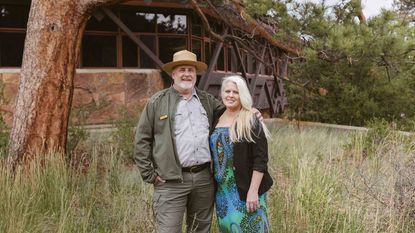
Just 40 days after retiring from the NFL last winter, celebrated quarterback Tom Brady announced that he would return to the Tampa Bay Buccaneers for another season after all, citing his competitive spirit and unfinished business on the field.
6 Steps to Finding Your Second Act in Retirement
Like Brady, some retirees are so drawn to their work that they can’t stay away for long. They may crave the sense of purpose or human interaction that a job can provide. And while Tom Brady doesn’t have to worry about running out of money, many retirees want to supplement their retirement income with a paycheck.
Lately, there’s been an uptick in the percentage of folks who “unretire.” In May 2022, 3.4% of people who said they were retired a year earlier had returned to work, according to the Indeed Hiring Lab, which provides research on the labor market. It’s not a staggering figure, but it’s an increase from the 3% average from 2017 through 2019.
Subscribe to Kiplinger’s Personal Finance
Be a smarter, better informed investor.

Sign up for Kiplinger’s Free E-Newsletters
Profit and prosper with the best of expert advice on investing, taxes, retirement, personal finance and more - straight to your e-mail.
Profit and prosper with the best of expert advice - straight to your e-mail.
What's Behind the Trend?
A tight labor market is one factor. In the spring, there were nearly two available jobs for every unemployed person. Employers are dangling incentives such as higher starting wages and signing bonuses to draw qualified candidates. And although ageism can still be an issue, employers are looking at older, experienced workers more favorably than they did in the past, says Chris Farrell, author of Purpose and a Paycheck: Finding Meaning, Money, and Happiness in the Second Half of Life. Rather than wonder when older workers are going to retire, managers are more inclined to think about how to keep them on the job , he says.
High inflation and a rocky stock market may also be luring some retirees back to work or encouraging preretirees to work longer. When your dollars don’t stretch as far, adding income can help cover expenses more comfortably.
“Filling up part of your income need with some part-time work can be a really good thing at this time, especially if you enjoy doing it,” says Jason Hamilton, a certified financial planner in Orange, Calif. Earning a paycheck can also help retirees delay withdrawals from their retirement and investment accounts.
That’s especially helpful if the stock market is down in your early retirement years. Pulling money from your portfolio while it’s losing value in a market swoon presents what’s known as sequence-of-returns risk . If your account balance shrinks significantly, you have fewer assets to create returns during market recoveries, posing the threat that you’ll run out of money in a retirement that could last decades. “Going back to work or continuing to work is one of the most effective ways of mitigating longevity risk,” says Jeffrey Levine, a CFP in St. Louis.
As restrictions related to the COVID-19 pandemic lift and vaccines protect against severe illness, those who dropped out of the workforce to avoid contracting the virus may feel more at ease returning to the office or picking up a retail job. But if you’d rather avoid in-person contact, the rising prevalence of remote work provides greater opportunity to stay home and collect a paycheck.
Some of those who were forced out of their jobs by economic or other circumstances are going back to work, too. Falling back on skills from a similar job earlier in his career, John Bramhall, 69, began working as a medical transcriptionist last year after a hiatus from work. Previously, he was an actor, but he lost acting jobs because of economic and social conditions in his area, and finding acting work was difficult when the pandemic shuttered stage productions. His wife had stopped working after she suffered a stroke in 2018, leaving him as his household’s sole wage earner. He has been collecting Social Security benefits since age 62, but “I could see I was going to have to do something again. We weren’t going to make it financially,” says Bramhall, who lives in San Francisco. He commutes to a medical office four days a week and works about 25 hours weekly.
Working at retirement age comes with special financial considerations, such as managing Social Security payments, deciding how to contribute or withdraw from retirement accounts, and weighing health insurance options. Whether you’re extending your stay in the workforce or thinking about dipping back in after retiring, keep these issues in mind.
Social Security
If you’re not yet receiving Social Security checks, earning income in your sixties may enable you to wait longer before you start taking benefits. Generally, you can claim Social Security as early as age 62, but you’ll receive up to 30% less in each check than if you wait until your full retirement age , which is 66 for those born between 1943 and 1954 and gradually rises to 67 for those born in 1960 or later. For each year that you postpone benefits after your full retirement age up to age 70, your checks increase by 8%. In addition, “if you earn enough in those extra years, you might improve your benefit calculation. Your benefit is based on your highest-earning 35 years, and if you can bump off a lower-earning year, you’ll improve your benefit,” says Justin Pritchard, a CFP in Montrose, Colo.
If you’re receiving Social Security and earning income from work before you reach full retirement age, your benefits are subject to the earnings test. In 2022, Social Security withholds $1 in benefits for each $2 a worker earns over $19,560. In the year you reach full retirement age, Social Security holds back $1 in benefits for each $3 you earn above a certain threshold—for 2022, it’s $51,960. The good news is that the withheld benefits aren’t lost forever: The month you reach full retirement age, the earnings test vanishes, and your monthly check is adjusted so that you’ll recoup the forfeited benefits.
Regret your decision to take benefits early? You may have a shot at a do-over. Within the first 12 months of claiming benefits, you can withdraw your application. You’ll have to pay back to Social Security the benefits you’ve received, but when you start benefits again, you’ll receive larger checks, as if you had never claimed benefits previously. If withdrawing your application isn’t an option, an alternative is to suspend benefits once you reach full retirement age. You’ll qualify for delayed-retirement credits of 8% a year, up to age 70.
Pensions and Retirement Accounts
Drawing on a pension provides some workers the financial security to retire from their first career and take on a new challenge in a second act. That’s what Kurt Baze, 57, did after he retired in 2015 as an elementary-school principal in Oklahoma. He had long dreamed of becoming a National Park Service ranger, and he and his wife, DeeDee, plotted out the financial implications of Kurt transitioning to a new career. With the pension as a foundation, “we knew we weren’t going to be destitute,” says Kurt. They also had a Roth IRA , a life insurance policy and a health savings account to fall back on. They decided to move to Colorado, where Kurt began volunteering at Rocky Mountain National Park. DeeDee took a full-time job at a credit union to provide income and health insurance.
Kurt was soon hired as a part-time seasonal ranger for the park, and then he moved to full-time work, which provides health insurance for the couple now that DeeDee has her own business as a financial planner. Kurt manages the park’s Junior Ranger program as well as programming for school trips to the park. He’s a good fit for the job thanks to his background in education, and leaving behind the stress of his previous work has benefited his mental and physical health.
The pension that Kurt is collecting from his teaching career provides payments for the rest of his life, with DeeDee receiving 100% of the benefits if he dies first. And when Kurt retires from his park ranger job, he will be eligible for a second pension from the federal government. Working for a new employer shouldn’t affect a pension you’ve earned from a former job. But if you go back to work for a company from which you’re already collecting a pension, check its rules. It may halt payments while you are working, or it may allow you to take full pension benefits at a certain age when working. Working a few extra years can help increase the pension payout you’ll ultimately get.
Kurt is contributing to the Thrift Savings Plan , a retirement-savings account for federal employees, and getting a matching contribution from his employer. A second act can be a good time to plump up your savings for an eventual full retirement. If you’re 50 or older, you can take advantage of catch-up contributions to 401(k)s and IRAs —in 2022, that’s an extra $6,500 (on top of the standard $20,500 limit) for 401(k)s and an additional $1,000 for IRAs (which have a standard cap of $6,000 this year). And the longer you can put off withdrawing from your retirement accounts, the more time the funds can grow tax-deferred.
RMDs and other withdrawals. By April 1 of the year after you turn 72, you generally must start taking required minimum distributions from tax-deferred retirement accounts, including traditional IRAs and 401(k)s. If you’re working at age 72, however, you can delay RMDs from a 401(k) with your current employer to April 1 following the year you retire (but you must take RMDs from 401(k)s you have with former employers on the standard schedule). An exception: You can’t postpone 401(k) RMDs if you have an ownership stake of more than 5% in the company.
If this rule applies to you and you don’t expect to need income from your other retirement accounts when you reach 72, one strategy is to roll the other accounts into the 401(k) of the employer you’re with currently, if it allows such transfers. Whether that makes sense for you depends on the specifics of your plans and preferences. If the investment options in your IRA are better than those of your 401(k), you may want to leave funds in the IRA and take RMDs at 72.
Keep in mind that if you’re working when you take RMDs, income from your job may boost you into a higher tax bracket, possibly increasing the tax you pay overall. “Often, it’s a good idea for people to try to maximize income before taking Social Security and RMDs to smooth out the tax liability,” says Ariadne Horstman, a CFP in Palo Alto, Calif.
Separately, some 401(k)s come with another special rule that can benefit those who retire early and later switch to another job. Typically, you must be at least 59½ to avoid a 10% penalty on withdrawals. But if you leave your employer for any reason and your age is 55 or older (or 50 or older for public safety workers, such as police officers and firefighters), you can take penalty-free distributions from the 401(k) of the employer you just left if the company allows it. Income from such withdrawals may help you get by if you need to cover expenses between jobs.
And keep in mind that withdrawals of contributions to Roth IRAs are free of taxes and penalties anytime (in most cases, withdrawals of investment earnings are subject to tax and a 10% penalty if you’re younger than 59½). If you undergo a period in which your earnings are especially low—say, the time between leaving your first career and switching to a retirement job—that may be a good opportunity to convert any traditional IRAs and 401(k)s that you have to a Roth IRA. You may pay less tax on the converted amount than you would while working full-time with a higher income. Your money grows tax-free once it’s in a Roth, and you won’t have to take RMDs.
Health Insurance
The question of how you’ll get health insurance coverage hinges on whether you are at least 65 years old—when you qualify for Medicare —and whether you’re eligible for your employer’s health benefits. Many employers do not offer health insurance to part-time workers, but some prominent companies, including Costco and Starbucks, extend it to part-time employees who work a minimum number of hours.
You may be able to negotiate health or other benefits with your employer, even if its formal policies don’t include provisions for workers who scale back on hours. You may also be able to negotiate a 401(k) match as a part-time worker. “I don’t find that many employers are dangling these perks publicly and or even privately to their employees, but if you ask about it, you may be pleasantly surprised to get some of the things you want,” says Richard Eisenberg, who recently retired from full-time work and now writes “The View from Unretirement” column for MarketWatch, among other retirement gigs .
If you are ineligible for Medicare or employer insurance, alternatives include getting on your spouse’s employer plan, if he or she is working; using COBRA, a law that allows you to stay on an employer plan for up to 18 months after leaving your job; or getting a plan through the government’s health insurance marketplace at HealthCare.gov . If your modified adjusted income (which includes earned income, Social Security benefits, and investment, retirement-account and pension income) falls below certain levels, you’ll qualify for a government subsidy that will lower the premium. Typically, to qualify for a subsidy, your income can’t exceed 400% of the federal poverty level. For example, with a 2022 health plan, that threshold is $51,520 for a single person, or $69,680 for two people in a household in most states. A temporary provision of a COVID-19 relief law allows eligibility for the subsidy at higher income levels in 2022, capping premiums at no more than 8.5% of household income, and it increases subsidies for those with incomes at 400% or less of the poverty level. Unless Congress acts, however, the enhanced subsidies will expire at the end of this year.
Most-Overlooked Tax Deductions and Credits for the Self-Employed
Medicare enrollment. If you have access to an eligible employer health plan, whether through your own employment or that of a spouse, you can delay Medicare enrollment when you reach age 65 without penalty as long as you’re covered by that plan. But Medicare is likely a no-brainer if you’re paying hefty premiums and other out-of-pocket costs with your current plan.
If you’re dropping your other health insurance, make sure you sign up for Medicare within your initial enrollment period, which starts three months before you turn 65 and ends three months after the month you turn 65. If you miss this window, you may have to pay a late-enrollment penalty for as long as you have Part B once you sign up. Once you stop working or lose employer coverage (whichever comes first), you have eight months to sign up for Part B without penalty.
Lisa has been the editor of Kiplinger Personal Finance since June 2023. Previously, she spent more than a decade reporting and writing for the magazine on a variety of topics, including credit, banking and retirement. She has shared her expertise as a guest on the Today Show, CNN, Fox, NPR, Cheddar and many other media outlets around the nation. Lisa graduated from Ball State University and received the school’s “Graduate of the Last Decade” award in 2014. A military spouse, she has moved around the U.S. and currently lives in the Philadelphia area with her husband and two sons.

Waiting until 70 to file for Social Security benefits comes with a higher check, but there could be financial consequences to consider for you and your family.
By Patrick M. Simasko, J.D. Published 22 April 24

The venture capital crunch may be easing, but it isn't over yet. That means there could be direct investment opportunities for private deal investors.
By Thomas Ruggie, ChFC®, CFP® Published 22 April 24

retirement plans Teachers and nonprofit workers can contribute more to a 403(b) retirement plan in 2024 than they could in 2023.
By Jackie Stewart Published 18 January 24

SEP IRA A good option for small business owners, SEP IRAs allow individual annual contributions of as much as $69,000 a year.
By Jackie Stewart Published 17 January 24

Roth IRAs Roth IRA contribution limits have gone up for 2024. Here's what you need to know.
By Jackie Stewart Published 13 January 24

simple IRA The maximum amount workers at small businesses can contribute to a SIMPLE IRA increased by $500 for 2024.
By Jackie Stewart Published 12 January 24

retirement plans State and local government workers can contribute more to their 457 plans in 2024 than in 2023.
By Jackie Stewart Published 11 January 24
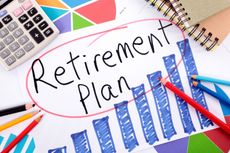
retirement plans The Roth 401(k) contribution limit for 2024 is increasing, and workers who are 50 and older can save even more.
By Jackie Stewart Published 10 January 24

Healthy Living on a Budget Medicare Part A and Part B leave some pretty significant gaps in your health-care coverage. But Medicare Advantage has problems, too.
By Donna LeValley Last updated 8 February 24

Medicare Advantage plans can provide additional benefits beneficiaries can't get through original Medicare for no or a low monthly premium. But there are downsides to this insurance too.
By Jackie Stewart Published 27 October 23
- Contact Future's experts
- Terms and Conditions
- Privacy Policy
- Cookie Policy
- Advertise with us
Kiplinger is part of Future plc, an international media group and leading digital publisher. Visit our corporate site . © Future US, Inc. Full 7th Floor, 130 West 42nd Street, New York, NY 10036.
GOBankingRates works with many financial advertisers to showcase their products and services to our audiences. These brands compensate us to advertise their products in ads across our site. This compensation may impact how and where products appear on this site. We are not a comparison-tool and these offers do not represent all available deposit, investment, loan or credit products.
I Was Retired, but Wasted Big Money On These 3 Things and Had To Go Back To Work

Commitment to Our Readers
GOBankingRates' editorial team is committed to bringing you unbiased reviews and information. We use data-driven methodologies to evaluate financial products and services - our reviews and ratings are not influenced by advertisers. You can read more about our editorial guidelines and our products and services review methodology .
20 Years Helping You Live Richer
Reviewed by Experts
Trusted by Millions of Readers
We spend the majority of our lives saving for retirement . But our plans (and budget) don’t always go as expected .
More than four million Americans will turn 65 this year — the age associated with retirement — yet many of them will be working, The Wall Street Journal reported. About one-third of adults 65 to 69 have jobs, according to a Federal Reserve Bank of Minneapolis report. A recent ResumeBuilder.com survey also revealed that one in eight people who are retired plan to go back to work in 2024, thanks to high costs, inflation, insufficient savings and boredom.
And many retirees have regrets, too, about how they’ve spent their money. Here are three things retirees said they wasted money on and had to go back to work.
Supporting Adult Children
More and more baby boomers are supporting their millennial and Gen Z children well into adulthood but it’s costing them their retirement.
Mark Lacy, a Seattle-based 65-year-old, has been financially supporting his two sons since they graduated from high school, resulting in a $400,000 loss in his retirement funds, he explained to Fortune. Both of his children are in their thirties, with expenses ranging from college tuition to plane tickets.
Maintaining a Larger Home
Gregory Boulware was a truck driver for 30 years before he retired in 2008 but went back to work in 2020 after he and his wife bought a house, NBC News reported.
“When we lived in an apartment, we were doing fine because we could easily afford it, but every year the rent would go up,” Boulware said.
The couple purchased their home with their life’s savings, which led them to fear of losing the house. Every mortgage payment was a challenge, and they sometimes pulled from other expenses such as food and gas to make ends meet. As a result, Boulware enrolled in a job training program for low-income adults and was hired into a clerical job.
Not Having Enough Money Set Aside
Joyce Fleming, a 70-year-old nurse who retired in 2019, went back to work over budget concerns. The costs of groceries, housing, owning a car and insurance skyrocketed over the past several years and many retirees never accounted for the dramatic cost of living increases.
After caring for her grandchildren during the pandemic, Fleming told WSJ that she took a job handling ticket sales and complaints at an amusement park call center. Now she looking for a higher-paying nursing job closer to home to help cover travel and home improvement costs.
More From GOBankingRates
- 6 Expensive Costco Items That Are Definitely Worth the Cost
- How Much Does the Average Middle-Class Person Have in Savings?
- 5 Reasons You Should Consider an Annuity For Your Retirement Savings
- 10 New Cars to Avoid Buying in 2024
Share This Article:
- How Long Will My Money Last?
- How Much Do You Need To Retire?
Learn More About Early Retirement Planning
- Advantages and Disadvantages of Retiring Early
- How To Become Financially Independent To Retire Early
- How To Retire Early and Quit the Daily Grind
- How To Withdraw From a 401(k) Early
Related Content

27 Things Retirees Should Do With Their Money Right Now
April 16, 2024

6 Ways To Lower Expenses in Retirement While Still Living a Luxury Lifestyle
April 15, 2024

50 Best and Worst Retirement Towns

8 Amazon Products To Avoid While on a Retirement Budget

6 Places To Retire That Are Just Like the West Coast but Cheaper

Social Security
I'm a Social Security Expert -- 3 Reasons Program Will Never Be in Danger of Insolvency

More Americans Are Worried About Running Out of Retirement Funds Than Dying, Survey Reveals

Retirement Planners: 10 Tips To Retire Early

10 Best Nevada Cities To Retire on $3,500 a Month

29 Careless Ways Retirees Waste Their Savings

How To Retire on $2,000 a Month: A Frugal Living Guide

These 8 Expenses Can Kill Your Retirement -- Should You Ditch Them ASAP?

4 Strategic Money Moves To Ensure a Stress-Free Retirement, According to Experts

The Average Retirement Savings in Every State

10 Best Florida Cities To Retire on $3,000 a Month

10 Ways Retirement Looks Different for Single Women

Sign Up For Our Free Newsletter!
Get advice on achieving your financial goals and stay up to date on the day's top financial stories.
By clicking the 'Subscribe Now' button, you agree to our Terms of Use and Privacy Policy . You can click on the 'unsubscribe' link in the email at anytime.
Thank you for signing up!

BEFORE YOU GO
See today's best banking offers.

Sending you timely financial stories that you can bank on.
Sign up for our daily newsletter for the latest financial news and trending topics.
For our full Privacy Policy, click here .
AARP members: Enjoy access to over 90 TED Talks. Find out more.
Popular Searches
AARP daily Crossword Puzzle
Hotels with AARP discounts
Life Insurance
AARP Dental Insurance Plans
Suggested Links
AARP MEMBERSHIP — $12 FOR YOUR FIRST YEAR WHEN YOU SIGN UP FOR AUTOMATIC RENEWAL
Get instant access to members-only products and hundreds of discounts, a free second membership, and a subscription to AARP the Magazine.
- right_container
Work & Jobs
Social Security
AARP en Español
- Membership & Benefits
- AARP Rewards
- AARP Rewards %{points}%
Conditions & Treatments
Drugs & Supplements
Health Care & Coverage
Health Benefits

Staying Fit
Your Personalized Guide to Fitness

AARP Hearing Center
Ways To Improve Your Hearing

Brain Health Resources
Tools and Explainers on Brain Health

A Retreat For Those Struggling
Scams & Fraud
Personal Finance
Money Benefits

View and Report Scams in Your Area

AARP Foundation Tax-Aide
Free Tax Preparation Assistance

AARP Money Map
Get Your Finances Back on Track

How to Protect What You Collect
Small Business
Age Discrimination

Flexible Work
Freelance Jobs You Can Do From Home

AARP Skills Builder
Online Courses to Boost Your Career

31 Great Ways to Boost Your Career

ON-DEMAND WEBINARS
Tips to Enhance Your Job Search

Get More out of Your Benefits

When to Start Taking Social Security

10 Top Social Security FAQs

Social Security Benefits Calculator

Medicare Made Easy
Original vs. Medicare Advantage

Enrollment Guide
Step-by-Step Tool for First-Timers

Prescription Drugs
9 Biggest Changes Under New Rx Law

Medicare FAQs
Quick Answers to Your Top Questions
Care at Home
Financial & Legal
Life Balance

LONG-TERM CARE
Understanding Basics of LTC Insurance

State Guides
Assistance and Services in Your Area

Prepare to Care Guides
How to Develop a Caregiving Plan

End of Life
How to Cope With Grief, Loss
Recently Played
Word & Trivia
Atari® & Retro
Members Only
Staying Sharp
Mobile Apps
More About Games

Right Again! Trivia

Right Again! Trivia – Sports

Atari® Video Games

Throwback Thursday Crossword
Travel Tips
Vacation Ideas
Destinations
Travel Benefits

Beach vacation ideas
Vacations for Sun and Fun

Plan Ahead for Tourist Taxes

AARP City Guide
Discover Seattle

25 Ways to Save on Your Vacation
Entertainment & Style
Family & Relationships
Personal Tech
Home & Living
Celebrities
Beauty & Style

TV for Grownups
Best Reality TV Shows for Grownups

Robert De Niro Reflects on His Life

Looking Back
50 World Changers Turning 50

Sex & Dating
Spice Up Your Love Life

Navigate All Kinds of Connections

Life & Home
Couple Creates Their Forever Home

Store Medical Records on Your Phone?

Maximize the Life of Your Phone Battery

Virtual Community Center
Join Free Tech Help Events

Create a Hygge Haven

Soups to Comfort Your Soul

Your Ultimate Guide to Mulching
Driver Safety
Maintenance & Safety
Trends & Technology

AARP Smart Guide
How to Keep Your Car Running

We Need To Talk
Assess Your Loved One's Driving Skills

AARP Smart Driver Course

Building Resilience in Difficult Times

Tips for Finding Your Calm

Weight Loss After 50 Challenge

Cautionary Tales of Today's Biggest Scams

7 Top Podcasts for Armchair Travelers

Jean Chatzky: ‘Closing the Savings Gap’

Quick Digest of Today's Top News

AARP Top Tips for Navigating Life

Get Moving With Our Workout Series
You are now leaving AARP.org and going to a website that is not operated by AARP. A different privacy policy and terms of service will apply.
Go to Series Main Page
My 5 Stages of Retirement
Or, how i learned to stop worrying and love retired life.
Katherine Skiba,

Here’s a dirty little secret: At age 67, I joined a garden club.
Not long ago, the idea of secluding myself in a church hall with a bunch of silver-haired dowagers who insist on proper botanical nomenclature (genus and species) would have been unthinkable.

AARP Membership — $12 for your first year when you sign up for Automatic Renewal
Not me. Not the hard-charging journalist who chased tough stories from tornadoes to triple murders to terror attacks.
Yet here I am, squirming in a folding chair as a lecturer drones on about how to grow unusual herbs for French culinary sauces I will never make.
How did I get here?
Two years ago, I retired. With a nudge from a neighbor, I joined the club to grow my skills as a floral designer. I had no interest in making a killer béarnaise, but I wanted to branch out, so to speak. (And shame on me, a bottle blond, for throwing shade on the club’s gray-heads.)
On April Fools’ Day, 2022 — no joke — I retired from AARP. My work as a writer and editor here focused on elder fraud , and I was gratified to help victims and alert others to this unconscionable scourge. I also wrote about Alzheimer’s research , centenarians and the catastrophic toll on older Americans of Northern California's Camp Fire , among other stories.
After four adrenalin-fueled decades of news reporting, my years at AARP were a cool-down phase. I was no longer on call 24/7. Even better, working for a nonprofit representing 38 million fellow older Americans proved a master class in retirement. I was in “pretirement” when I started, and I learned from the experts I interviewed and from those colleagues I spoke to for their stories about health , fitness , personal finance — you name it.
At a staff gathering six months into the job, I heard a talk on how to live to be 100 . Among the speaker’s exhortations: Have a “playful, joyful retirement.”
Right afterward, I got a call from my oldest brother announcing that he was retiring. In light of our roll-up-your-sleeves upbringing, I was stunned. But I parroted the lecturer, wishing my sibling a playful, joyful retirement.
Thus, the seed was planted.
No poster child
Let me be clear that I am not an AARP-sanctioned poster child for retirement. No such person exists. AARP aims to empower people to choose how they live as they age. As we approach the off-ramp of our working years, our health, family and finances may be radically different from the next person’s. Everyone’s retirement is theirs alone.
I chose April 1 to call it quits for two reasons: I would never forget the date, and, mischievously, I wanted one last laugh as I bade farewell to the 9-to-5, the cubicle farm, the deadlines and the annual performance reviews (which, as a mature professional, I had come to loathe).
My finances seemed on solid footing. I had a modest newspaper pension and could rely on my husband’s paycheck. I would take a buzz saw to household spending , put off Social Security and not touch our nest egg.
When D-Day (Departure Day) rolled around, I laughed, cried, listened to tributes and gave what my colleagues called a funny speech. I was happier than an inmate being sprung from the big house. I would be out of the office — forever — and freed from the shackles of full-time toil. I’d worked since childhood, first at my family’s long-running restaurant outside Chicago and later in retail and for the U.S. Postal Service, among other places.
Ah, hubris. In the months to come I would learn that, much like other important endeavors — grieving, staying married, shaving my legs — there are stages to retirement. These were mine.
Stage 1: Euphoria
I had won the lottery. Every morning I could ignore the alarm my husband set and do whatever I wanted. My life seemed ripped from the script of Ferris Bueller’s Day Off .
Most Popular

AARP NEWSLETTERS

%{ newsLetterPromoText }%
%{ description }%
Privacy Policy
ARTICLE CONTINUES AFTER ADVERTISEMENT
Freedom tasted sweeter than it looked on paper — and trust me, I had read a lot about retirement. The authors of Happy Retirement: The Psychology of Reinvention ask whether you regard retirement as a time to explore new horizons, put up your feet, search for meaning or contribute on your own terms. I was warm to R&R and new places.
With stress evaporating with each day, I got serious about a diet, ratcheted up my exercise regimen and shed 25 pounds. I was high on my hard-earned freedom and could fit into my old jeans. But honeymoons, history shows, don’t last forever.
Stage 2: Shock and awe
Timing is everything. Mine stunk. The stock market plunged in 2022 — as did my confidence — and the country was gripped by the worst inflation in 40 years . Who was the April fool now?
I retired at age 65½. The Social Security Administration’s life expectancy calculator says on average, a woman my age will live to 87. But my ancestors lived into their 90s, so I wanted a nest egg that was bulletproof.
I shifted some assets into higher-yield investments, eliminated frills, clipped coupons, hunted for bargains and harangued merchants for “senior citizen” discounts (the only time I use that term). Taxes were taking a bite out of my pension , which covered Medicare expenses but didn’t stretch far after that.
I lamented both the loss of my paycheck and the camaraderie of my “work family.” Then I remembered reading about people who “unretire” and go back to the proverbial rock pile after imagining they’d never pick up a sledgehammer again.
Coupons for Local Stores
Save on clothing, gifts, beauty and other everyday shopping needs
As I had for years, I scoured job listings, but now each opening seemed tailor-made for the Energizer Bunny. I was growing accustomed to what the Italians call il dolce far niente , the sweetness of doing nothing.
Taking even a part-time job seemed as desirable as eating glass, so I doubled down on freelance writing.
Stage 3: The reality of gig work
Though the topics were engaging, churning out freelance stories felt like a deal with the devil. I could not shake my driven, perfectionist tendencies, so I put in too many hours from the solitary confinement of my home office. The state, federal and self-employment taxes whittling away at my measly earnings made me want to weep.
Even worse was the heckling of friends with a few years of retirement under their belts. “When are you going to really retire?” they’d sneer.
I thought I would ace retirement, but the economic downturn was raining buckets on my parade. I felt like a failure.

Stage 4: Retirement 2.0
Once economic conditions brightened, I cut back on freelancing to give retirement a real chance — and get my friends to shut up.
That left me time to swim, refinish furniture, reupholster chairs, paint our fireplaces, entertain houseguests, bake, tame my garden and take my late-in-life passion for flower arranging to the next level. Some attempts to rekindle my softer side belly-flopped. True confession: The sewing machine I bought myself as a retirement gift is gathering dust.
When not immersed in DIY mania, I might luxuriate with a good book. I have learned to love naps. And I’m in the early stages of “Swedish death cleaning,” the art of decluttering your home to ease the burden on your loved ones after you’ve gone. I have chucked an abandoned book project and boxes of yellowed newspaper clips and story printouts. It’s a way to make room for new endeavors in my garage (rechristened “my studio”) and in my life.

LEARN MORE ABOUT AARP MEMBERSHIP.
Stage 5: The bucket-list trip
I dislike the concept of a bucket list. Maybe because I don’t want to come off as gluttonous or tempt fate. Zip-lining, swimming with sharks, sticking my head into the mouth of a ravenous lion? No need.
I figured if I had one, and only one, thing I desired to do before the end, my odds of success would climb. My only wish was to visit all seven continents. Once I’d touched down in South America and Antarctica, I would step onto the winner’s podium.
So, when I eyeballed a bargain fare on a reputable cruise line for an excursion to Antarctica via Argentina, my husband and I went for it.
The endless oceans, majestic, snow-draped mountains and Windex-blue icebergs that mark this vast wilderness blew our minds. We breathed in the freshest air we’ve ever inhaled. We hiked, kayaked and heard lectures on the golden age of Antarctic exploration. We befriended the expedition guides (one a woman who had summited the highest peak on each continent) and dined with these raconteurs and other happy bucket listers aboard ship. Now this was retirement.
Of course I did the polar plunge. Why not? Hours of nerves and 30 seconds in 28-degree water equal a lifetime of bragging rights.
The trip taught me two things: Sometimes I need to let my heart be my compass. And for the rest of my days, I don’t need to see another penguin.

Everybody has retirement advice
As I enter year three of retirement, I know that my fellow retirees are spoon-fed more advice than teens, college interns and expectant parents. Some of the one-size-fits-all counsel struck me as dumb.
You’ll be bored in three weeks.
You need to accomplish at least three things a day.
You should take up pickleball .
Let’s take them one by one.
Boredom. It’s preposterous to think any journalist worth their salt would find nothing to do, see, read, try or explore.
Three things a day. To me, that would be phoning it in.
Pickleball. I’m game but haven’t gone there. Yet.
My advice? Dust off old passions and try new things. Follow the example of smart retirees you know. Brace yourself for requests that you work for free. Set boundaries. After a lifetime of being told what to do (and getting paid for it), remember that “No” is a complete sentence.
It’s your life. Your retirement. Your time. And time, sweet time, always goes by.
Katherine Skiba is a contributor for AARP. She has reported for the Chicago Tribune, U.S. News & World Report and the Milwaukee Journal Sentinel , and is the author of a wartime memoir, Sister in the Band of Brothers: Embedded With the 101st Airborne in Iraq.
Discover AARP Members Only Access
Already a Member? Login

More From AARP

Tips for caring for your collectibles, including proper organization, accurately assessing the value and more

Follow This Road Map to Test-Drive Your Retirement
7 steps to help hone your plan in ‘pretirement’ years
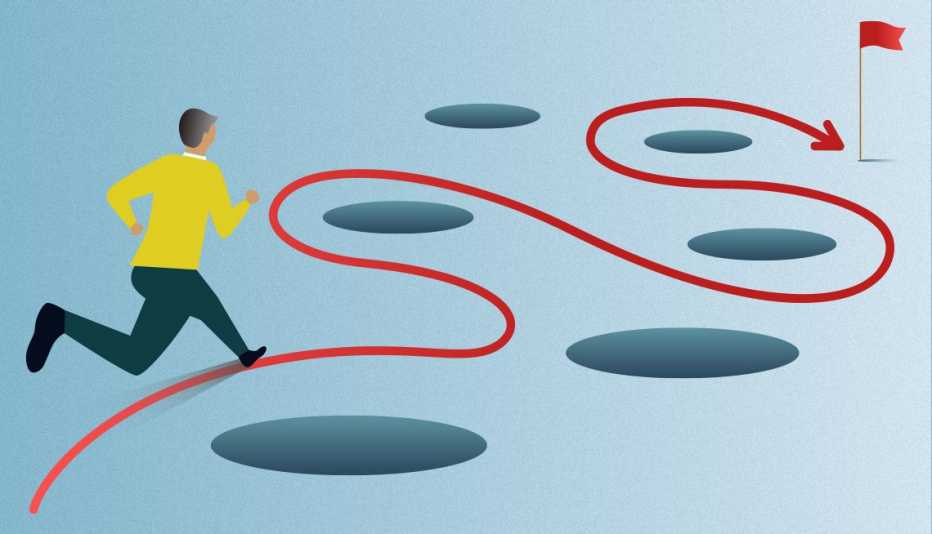
6 Things I Wish Someone Had Told Me Before I Retired
Recent retiree shares lessons learned about money, time

Are You Emotionally Ready for Retirement?
Take steps to prepare your mind as well as your money
Recommended for You
AARP Value & Member Benefits

High Yield Savings from Marcus by Goldman Sachs®
Rate bonus on high-yield online savings account

AARP® Travel Rewards Mastercard® from Barclays
3% cash back on airfare, hotel stays and car rentals

Interview an Advisor™ Tool
A free resource to help you assess a financial advisor

AARP® Staying Sharp®
Activities, recipes, challenges and more with full access to AARP Staying Sharp®
SAVE MONEY WITH THESE LIMITED-TIME OFFERS

IMAGES
VIDEO
COMMENTS
Here are some tips for creating your retiree resume: Use a format that's easy to read. Remember to proofread or have someone else proofread. Consider including your professional social media links or a website with sample work. Email a copy to yourself so you always have it ready to forward to someone or submit online.
2. Write a resume summary. Below your contact information, write a one- to two-sentence resume summary that describes how your skills and experience make you a good fit for the position you want to apply for. This statement allows you to reveal your strongest assets and credentials right away. It is your chance to make a good impression on the ...
Returning to Work After Retirement Resume Example. Let's take a look at an example of a functional resume for retired person returning to work. This should give you a good idea of how to write yours: (Name) (Email) (Location) Summary. A dedicated office manager who has always surpassed performance goals.
5 Returning to Workforce. Resume Examples for 2024. Stephen Greet April 11, 2024. Whether you took a sabbatical or spent some time caring for a loved one, returning to the workforce usually means a resume update and a whirl with a free cover letter builder. Your skills and experiences might have changed since the last time you were employed ...
Key takeaways for writinga retiree resume. Choose the resume format for your unique retiree situation. Include a header with your contact information and an updated email address. List your work experience in reverse chronological order. Mention skills, qualifications and experiences that are relevant to the position.
Sample resumes for older workers. To give you an idea of what hiring managers expect from you, here are two examples of resumes for older workers to look at before you write your resume: 1. Example resume with 25 years of experience. The example below shows you how to fit 25+ years of relevant work history on your resume (tap or move your mouse ...
Here are some basic tips for any retirees trying to get back to the job market. 2. Be absolutely clear. State clearly in your resume summary and the first few lines of your cover letter that you're looking for a post-retirement position. You'll save yourself from hassle and headaches if you're clear about this upfront.
Retiree Resume Sample. Samuel Drake. 314 Rosemary Lane, Herndon, VA 89003. (000) 321-2521. samuel @ email . com. SUMMARY. Accomplished business professional with vast experience in business development and resource allocation. A proven entrepreneur who is attentive to details and produces profitable results, known for taking initiative and ...
Key takeaways. Format your returning to workforce resume for clarity and coherence, ensuring it aligns with the role. Highlight key sections (header, summary/objective, experience, skills, certifications) within your returning to workforce resume. Quantify achievements and align them with skills and job requirements.
Retiree Returning to Work Resume Sample. Kyle Miller. 2 West Road, Dover, DE76523. (000) 999-9999. [Email] MARKETING DIRECTOR. PERFORMANCE HIGHLIGHTS. • Marketing director with 30+ years of solid track record in contributing to marketing effectiveness through identification of goals.
Education. List your degree and the school (s) you attended. Experience. List your work experience in reverse chronological order. If you're using a functional resume format, group your experience or accomplishments by type-i.e., technical experience, leadership experience, etc. Under each item, give specific, detail-rich examples of your ...
3. Update Your Resume. A resume makeover is a must when trying to return to working after retirement. Although it might be tempting to list all your past career roles and accomplishments, relevance and simplicity are key here. Follow a reverse chronological order and include the jobs that best align with what you are looking for.
For some, returning to work offers an opportunity to meet new people and give back to the community. Choosing a job that allows you to interact with customers, coworkers or members of your community can help you share experiences and make new friends. If you are feeling a lack of social stimulation during your retirement, working in an industry ...
Restrict your resume to one or two pages. Your resume should highlight your qualifications, not tell your entire life story. 4. Write a strong cover letter. In addition to your resume, your cover letter essentially sells you to the potential employer. It's your place to elaborate on what your resume summarizes.
Top 10 Retiree Resume Summary Examples. 1. Seasoned financial executive transitioning into retirement, bringing a wealth of expertise in investment management, risk assessment, and financial planning. Known for developing innovative financial models and leading successful mergers and acquisitions. Achieved a consistent 15% annual return on ...
In 2022, Social Security withholds $1 in benefits for each $2 a worker earns over $19,560. In the year you reach full retirement age, Social Security holds back $1 in benefits for each $3 you earn ...
If you haven't reached your full retirement age (FRA), working reduces your payments by $1 in benefit payments for every $2 you earn above the annual limit. In 2023, this limit was $21,240. In the year you reach full retirement age, the deduction is $1 in benefits for every $3 you earn above a limit of $56,520.
Other people work because they feel valuable doing the work, and it gives them a sense of purpose. Or, a retiree might work due to any combination of the above.". Once you decide to move ahead ...
Ward notes that unretiring allows individuals who are 50 or older to make higher catch-up contributions to their 401 (k) and individual retirement accounts (IRAs). For 2023, eligible workers can save another $7,500 after maxing out employee deferrals at $22,500. Plan for additional expenses. According to Ward, those retirees who choose to go ...
Here are the steps you can take to create an effective retired resume objective to highlight your experience and abilities: 1. Format the objective properly. Before writing your objective statement, it's important to format it properly on your resume. Place the statement at the top of your document, just below the header that contains your ...
The average retirement age has ticked up to about 61, while the average retirement age among nonretirees is now 66, up from 60 in 1995, according to Gallup research. Economic uncertainty during ...
Many retirees are thinking about going back. McDowell isn't the only one coming out of retirement to seek new opportunities. A September 2021 survey by Resume Builder found that 34 percent of retirees have considered going back to work because of job opportunities that are now available. And 1 in 5 retirees (20 percent) say past employers ...
5. Communicate Your Unique Value Proposition. Pinpoint what sets you apart from other candidates. Explain how your seasoned perspective can contribute to innovative solutions and stability in the team. 6. Keep It Concise and Focused. Limit your resume objective to 2-3 sentences.
Joyce Fleming, a 70-year-old nurse who retired in 2019, went back to work over budget concerns. The costs of groceries, housing, owning a car and insurance skyrocketed over the past several years and many retirees never accounted for the dramatic cost of living increases. After caring for her grandchildren during the pandemic, Fleming told WSJ ...
My 5 Stages of Retirement. Former AARP reporter and editor Katherine Skiba outside her home in the Washington, D.C. suburbs. She retired in April 2022 after a decades-long journalism career. Here's a dirty little secret: At age 67, I joined a garden club.
New York CNN —. Hope Murray retired in 2013 after a 50-year career that ranged from game show producer to Hollywood party planner to casino executive. She settled into a life of golf, game ...